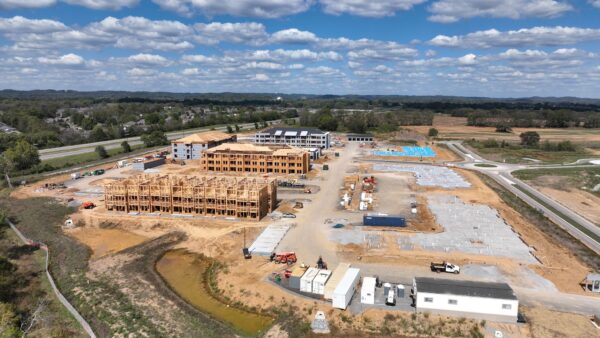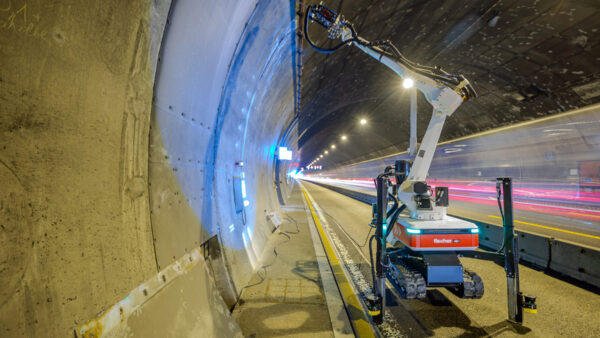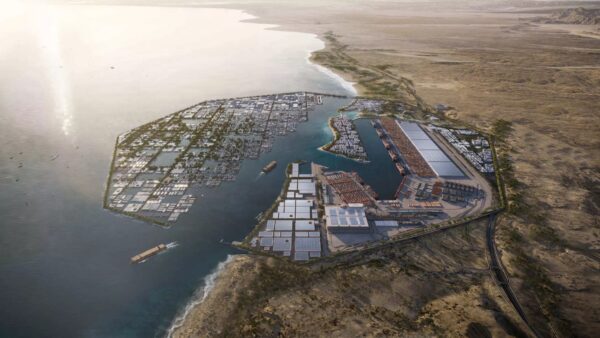Small, electric, two-person ‘pods’ that drive themselves will be ferrying people around in the UK town of Milton Keynes by 2018.
The trial of the 40-pod public transport system is part of a public-private initiative designed to make the UK an international leader in driverless vehicles.
Pods are a different game, by the time they are in cities interacting with people, they will not have steering wheels – autonomous from day one– Tim Armitage, Arup
This month, a prototype pod (pictured) was unveiled by advanced UK manufacturer, RDM Group.
An engineer leading the research programme believes that the dream of being able to order a pod on your mobile phone will be a reality – in time.
“That’s going to happen, hopefully,” said Tim Armitage, of the engineering and consultancy firm, Arup.
UK Autodrive is a £19.2m ($29.5m), three-year programme led by Arup in a consortium including Milton Keynes, the city of Coventry, Jaguar Land Rover, Ford, Tata Motors, RDM Group, Oxford and Cambridge universities, and others.Â
It will develop autonomous vehicle technologies and try and integrate driverless vehicles into existing urban environments, looking at the challenges from technical, social and economic perspectives.
In an interview with GCR, Armitage, a transport engineering consultant, said the research would have three streams: passenger cars of the sort recognisable today; “pods”, or low-speed, autonomous inner-city transporters; and cities themselves – how they might need to change to accommodate driverless vehicular traffic.
For passenger cars, the journey to full autonomy would be an evolution, Armitage said.Â
“The vehicles themselves will become increasingly autonomous, but it’s a journey,” he said.
“There will be a gentle progression from the sorts of driver assistance that we have now – parking, lane-change control, adaptive cruise control. These will become better and better until an end point, maybe a decade or more away, when vehicles drive themselves all of the time. I should add that this is only if people want it, and support the evolution commercially.”
“These vehicles will be mainly used for inter-city travel or from countryside to city,” he said. “I don’t think we’d see cars, as such, driving around cities any more.”Â
Look mum, no hands
This is where pods come in. “Pods are a different game,” Armitage said. “They will be revolutionary. By the time they are in cities interacting with people, they will not have steering wheels – autonomous from day one.”
By 2018, UK Autodrive plans to have a rudimentary public transport system featuring 40 autonomous pods being trialled in Milton Keynes. “These will be predominantly designed to work deep into the urban realm as a public transport system,” Armitage said. “I don’t envisage people owning pods.”
On 11 February, Coventry-based manufacturer RDM Group unveiled a prototype of the driverless pod that will be whizzing around Milton Keynes. Called the LUTZ Pathfinder (short for Low-power Urban Transport Zone), the pod is electric, carries two people, goes 15mph max, and runs out of battery after 40 miles. It uses sensor and navigation technology from the University of Oxford’s Mobile Robotics Group.Â
RDM said the prototype took 10 months to complete and plans to make three of them for trials in June this year. Â
No more traffic lights
Armitage said pods could insert themselves into everyday life in surprising ways. For instance, when an elderly person books an appointment at a hospital, the system could automatically book a pod to pick him or her up.
“I think there will be a lot of new business opportunities and advantages that haven’t been thought of yet,” he said. “The pods will change a lot of things.”Â
Another interesting possibility is no more traffic lights.
“Looking far enough ahead I don’t see why we’d need lights on sticks, because there will be better ways to control vehicle flow,” he said, “but that would require all the vehicles in an area to be autonomous.”
“Whether layouts of roads will need to change is something we don’t quite understand yet,” he added. “It’s something we’ll be looking at with transport planners in Milton Keynes and Coventry.”
Internally, Arup is researching what impact driverless technologies might have on the design of buildings themselves, especially big buildings like hospitals, stadiums and airports.
More broadly, the UK Autodrive project will try and make the UK a leader in driverless technology. It will test autonomous passenger vehicles on closed roads, to start with, setting them simple tasks at first, but then raising the complexity. It will study how autonomous vehicles interact with their environment, with old-fashioned, driven cars and with autonomous vehicles from different manufacturers.Â
“It’s about positioning the UK as a place where external investment would come in because the UK is an exemplar place where autonomous systems can be trialled and developed,” Armitage said. “It’s also about being a place where the urban populace are familiar with the concept, so the uptake could happen quite quickly.”
• UK government funding for the project comes from Innovate UK
Comments
Comments are closed.







The problem with this kind of technology, and I accept that we are in dire need of new ideas in land transport, is that it is probably even less energy efficient than the bus/train/tram failed business models we currently can’t stop throwing vast amount of money at. Simply having a battery as a traction energy store halves the overall thermal efficiency of the system, for which the smaller mass of the vehicle and lower speeds will do very little.
I hate to mention it too, but the UK uses 500Twh p.a. on land transport – almost all road, and the National Grid supplied only 375Twh last year for everything. And was running at around the 72% capacity mark – just below the point where coping with repairs, maintenance and out of course events get interesting. So if you get 40Twh out of the grid for this sort of transport – replacing 20Twh liquid fossil fuels – you will have brought the grid to the point of breakdown, and used an extra 160Twh of mostly fossil fuels (though not liquid ones) to achieve it – an eight-fold increase in energy use to do the same task.
Well done!
What an excellent idea – Cannot wait for it to happen. The opportunities and ideas for different applications are endless. Love the idea of linking to health care and isn’t it great we are leading the way!
Who carries the insurance and what happens when as it will for certain be an accident
Roger Ward FCIOB